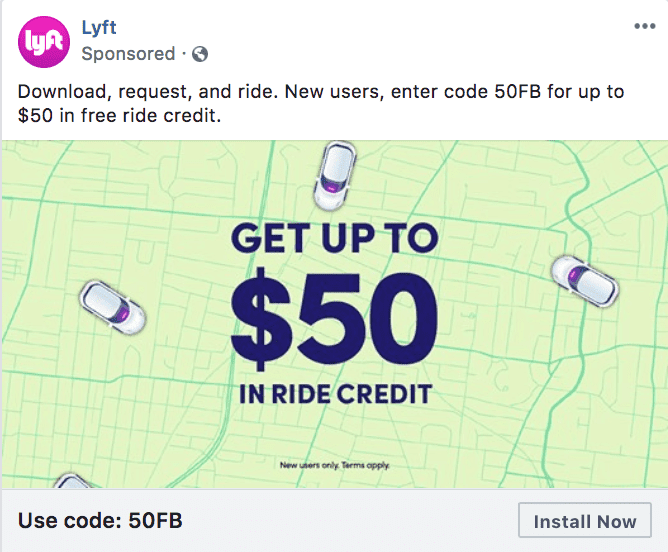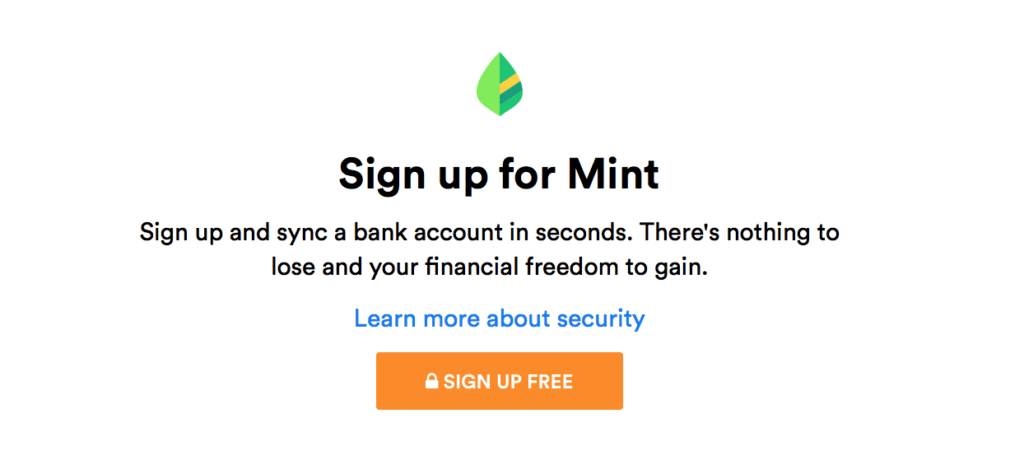No matter what your goal is for any campaign, it needs a compelling CTA. If you want to increase your lead-generation and sales, then you must learn to write a call to action that will convince your readers to act. So in this post, I’ll talk about what CTAs are and show you how to craft the perfect one.
Why use a call to action?
A call to action is a short message which entices a prospect to take the action which will move them from one stage of funnel to the next.
It’s a phrase or short piece of content that tells a prospect exactly what they should do, why and how to do it.
It can be as simple as three words (“Add to Cart”) or a combination of elements (like headline + description + button to complete the action). Here’s an example from AdsPresso.

Calls to action are used on several places depending on the website pages and marketing campaigns you’re using to promote your business.
For example, the call to action I showed you in the above photo is being used on website homepage. In addition, you can use a call to action
- Below a blog post to ask readers to subscribe
- In your marketing email to encourage reader to take up your offer
- In social media or search ads to entice people to click on your ad
- In any page of your website depending on the purpose of that page.
As you can see, there are dozens of use cases where you write a call to action copy to ensure success of your marketing and sales efforts.
No matter how good your content or campaign is, if you don’t include purposeful elements that specifically ask your readers to do something, then you are wasting your efforts.
How to write a great CTA
If you want to write effective CTAs, there are a lot of key factors to consider. Fortunately, you can count on the CTA best practices that have returned positive results, along with examples to understand how to use them.
Highlight main benefit + feature
Your readers want to know what’s in it for them. Otherwise, they will leave as quickly as they came.
For a long time, marketers and copywriters have advocated that you should focus on benefits instead of features when selling. For example:
Feature-Focused: Come to Pizzeria for great ambience and large selection of Italian pizzas.
Benefit-Focused: Come to Pizzeria to satisfy your taste buds, have a good time and create happy memories with friends and family.
As you can see, this is sound advice. Focusing on benefits is certainly better. The benefits connect the dots for the user on how exactly a product or service and its features will give them what they want.
However, I’d like to make a slight modification. People browsing the web are often looking for specific information, which is conveyed through features, not benefits. So why not use the best of both worlds?
It’s better to write your call to action content in such a way that it uses a combination of the main feature and its desired benefit. For example, consider Skype:

As you can see, Skype starts its CTA with the main benefit, followed by features which contribute to this benefit.
- Benefit: Catch up and quality time with friends and family
- Feature: HD video calls, one to one, or as a group
By combining both these elements in call to action, Skype doesn’t just highlight the benefit it is providing, but also answers how.
Demonstrate competitive advantage
Writing a call to action which conveys what sets you apart from alternatives can be great for building brand awareness and sales. For example, see this Facebook ad from Brandless.

It clearly conveys why prospects should buy from them, along with the direct “Shop Now” CTA button. It can’t get any more straightforward than that.
Use social proof
Do you have any great testimonials or reviews that stand out? Then there’s no reason to use them to enhance your CTA.
Social proof is a great way to build trust and convey your core benefit simultaneously. Look at the above example again from Brandless.
It starts with a testimonial from a satisfied customer. I also love how concise the testimonial is, while clearly highlighting what the customer bought, the benefit they got, and who they are.
Give free money
Giving away free samples or credits of your product or service is one of the fastest ways to grow customer-base. And brands like Lyft know this.

In their Facebook ads, Lyft uses the fact they everyone likes free money. And the Install Now button leads the user directly to claim their free credit.
Consider context and timing
A call to action copy never works in isolation. There is always a context behind why, where and when you’re using it.
For example, you need an understanding of where a prospect is in the marketing funnel to show the right CTA for that stage.
You wouldn’t want to ask them to sign up to your email newsletter when they’re just about to make a purchase. Asking them to optin would make more sense during their first visit to your website.

But then again, it’s bad to show a CTA to sign up right when they have just landed and haven’t had a chance to browse the page. So having your popup show after a few seconds or when a prospect is about to exit is better.
My point is, don’t ask the prospect to do something secondary until and unless they have completed the main task you wanted them to do.
Similarly, before you write a CTA, you want to know the advertising campaigns or the landing pages where it will be used. Otherwise, you can’t make sure that it will be consistent to the overall user experience.
It boils down to how much you understand your target audience and their journey towards becoming a customer.
Make the action seem quick and easy
The more effort it takes to follow through on your CTA, the less conversions you will get. So your CTA should be as quick and easy as possible, and it should seem that way. Consider Mint for example:

It specifically says that the sign up process takes seconds, and there is nothing to lose. By doing so, it succeeds at lowering a prospects’ defenses and increasing confidence to complete the action.
Offer a complementary incentive
Sometimes, bundling your product or service with another can achieve results that an isolated offer cannot. T-mobile uses this strategy to lure prospects into their family plans.

But not that the incentive should be something directly related to what you do. In this call to action content, there is a close link between getting Internet plans and using a streaming service. That’s why it works.
Evoke curiosity
Employing curiosity in your call to action copy can catapult your conversion rate when used the right way. For instance, see what Toms did a while back.

They put up a popup on their website to announce a flash sale. At the very least, the CTA makes the prospect curious to check out what the fuss is about.
And the words they use (like “psst” and “surprise”) make the sale seem like an intimate, exclusive secret. This reminds of the next point.
Create sense of urgency
Implying that an offer is available only for a limited time or to a limited number of prospects is another way to create exclusivity when writing a call to action.
As you can see in the Toms example above, the call to action isn’t just making you curious, but also conveying urgency. It states that the sale is valid for a limited time, making prospects more likely to take action sooner.
But don’t exaggerate
One of the most alarming trends recently is making exaggerated claims to grab attention. In the world of marketing, such headlines and CTAs are often referred to as clickbaits.

Clickbaits tarnish your ability to build trust with your audience and undermine conversion in the long term. So do not use clickbaits that fail to deliver when rubber meets the road.
For example, you should say something like “free digital marketing course” only when you are sure that the users will truly be redirected to a free digital marketing course.
Reduce risk by addressing objections
By now, you may have taken the time to understand your target audience or have been selling in the field. So you’d probably know some of the biggest concerns or objections your prospects have when it comes to buying.
Addressing the main objection and minimizing risk can make for a great call to action. And nobody does it better than Netflix.

Users can try it free for a month and cancel anytime. So they know that they can take the action without any risk. Moreover, it shows how confident Netflix is about their product.
Use FOMO (fear of missing out)
When it comes to CTA writing, the fear of missing out, otherwise known as FOMO is hard to beat.
It is human nature to always want to belong, and your prospects would want to miss out on an opportunity that everyone else is capitalizing on and that might not come around again.

When you write a call to action using the FOMO technique, you tap into several human emotions beyond fear.
There’s panic, greed, curiosity, comparison, and even pride, and these are all connected to exclusivity, which is what drives people to act.
Whichever tactic you employ, the idea is to limit the availability of your content to increase its perceived value.
Conclusion
Writing a CTA that converts shouldn’t be a challenge anymore. Using the formulas discussed above, you can craft your own call to action and integrate the unique features of your brand and products.
Do you use any other CTA formulas apart from the above? If yes, take a minute to let me know which ones you’ve used in the comments below.


